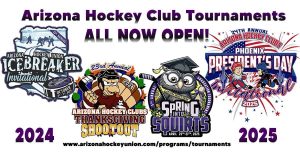From the Trainer’s Room: Improving your speed

The time for offseason hockey training is upon us.
At this point of the year, the focus should shift to how we can improve and make gains for next season. Almost every hockey player I work with wants to get stronger and get faster.
Following a proper training plan designed by a professional coach can help you achieve both of these goals.
As the current season ends, players should limit their time on the ice and focus on a corrective exercise program to address last season’s injuries, as well as mobility work and taking a mental break from the game. The next phase would be to start building a good strength foundation and cardiovascular efficiency. The intensity of the workouts will increase as you get closer to the opening of next season. Speed, agility, and quickness (SAQ) drills in a dryland setting will be used in conjunction with the weight lifting program and on-ice practice.
Today’s article will touch upon the speed aspect of your training.
“But coach, I hate running!” I get it. But the science is clear in that good running mechanics can increase speed and translate to faster skating. I know, skating is not running. I get that, too. What proper running mechanics can do is teach the hockey player how to produce force into the ice, thereby increasing the power of their stride. We then can work on the stride frequency within a given distance. Increased force plus the increased frequency equals increased speed.
So what drills do I do to get faster? Well, it takes more than countless hours of ladder drills in the parking lot. There is a difference between “fast feet” and moving the rest of the body across the playing surface. The game of hockey involves a lot of accelerations, changes of direction, and decelerations over short distances. Real speed training addresses each of these in a fashion directly related to the game of hockey. Typical drills should generally only cover a distance of 10-15 yards. These drills should be done at a maximum effort with plenty of rest to recover so each rep is executed properly. The volume is low, but the intensity is high and should only last around 20 minutes of the training session. I like to practice these drills early in the training session to reduce the risk of injury due to fatigue.
Players need to understand that they need to build a foundation of strength first, then continue to build upon that foundation. Proper weight training with an emphasis on single leg strength and core stability will help. There should also be conditioning elements to help repeat maximal efforts with proper efficiency. Drills such at the 5-10-5 Pro Agility can be used to measure and test speed improvements over the course of the program.
Lastly, ensure that the program as a whole is age-appropriate under the scheme of long-term athletic development. There’s no point trying to introduce skills that the athlete may not yet have the capacity to utilize. Target proper skills at the proper time in the training windows.
Mike Hannegan is an athletic trainer and strength coach with 10 years of experience in the NHL with the Anaheim Ducks and St. Louis Blues. He is currently the director of the Compete Sports Performance and Rehabilitation facility inside The Rinks-Yorba Linda Ice located in beautiful Orange County. He can be reached at mike@competeperformance.com.
Photo provided by Compete Sports Performance and Rehab
(April 4, 2023)










